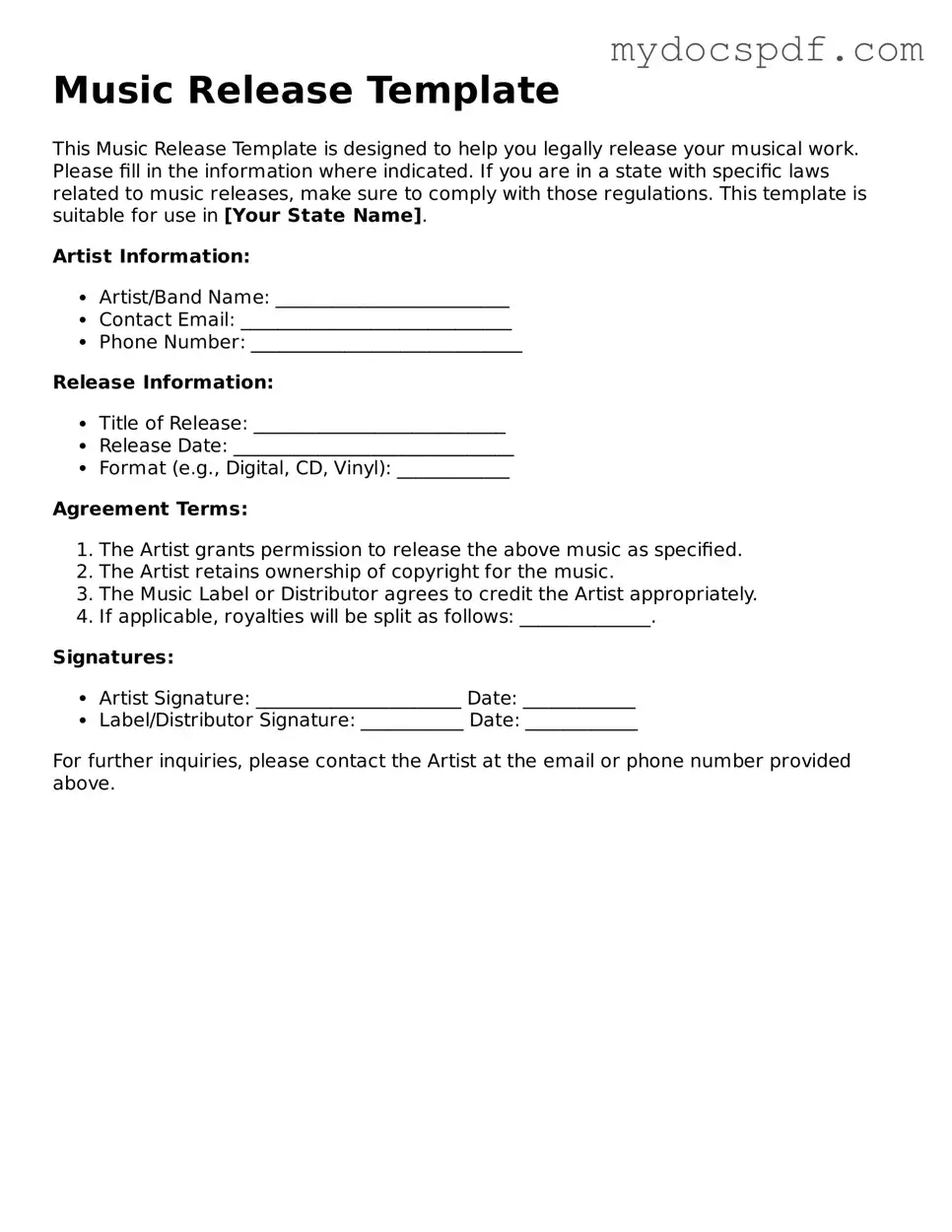In the dynamic world of music, artists and producers often face the challenge of protecting their creative works while ensuring that they can share them with the world. The Music Release form plays a crucial role in this process, serving as a legal document that grants permission for the use of a musical piece. This form outlines the rights and responsibilities of both the artist and the party seeking to use the music, whether it be for a commercial project, a film, or a promotional campaign. Key aspects include the scope of use, duration of the agreement, and any compensation involved. Additionally, it addresses issues of copyright, ensuring that the artist retains ownership of their work while allowing others to use it under agreed-upon terms. By clearly defining these elements, the Music Release form not only protects the interests of the creator but also fosters a transparent relationship between artists and those who wish to collaborate with them.
